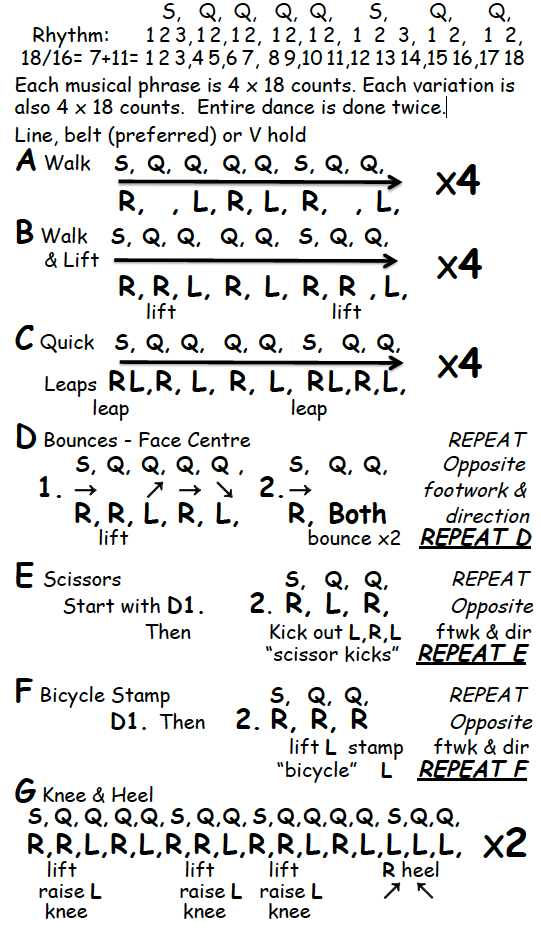*1st Generation dance. A dance that developed in a traditional way – not ‘taught’ by a teacher or choreographer, but ‘learned’ by observing and imitating others in your “village”, where the village’s few dances were the only dances anyone knew. It usually is ‘generic’ – the dance pattern is fairly simple and not tied to any particular piece of music. The dance phrase may or may not match any musical phrase, but the music’s rhythm must be suitable for performing the footwork. This dance may have many variations, but they’re performed at the whim or inspiration of the leader or (sometimes) any other dancer so long as it doesn’t interfere with the flow of neighboring dancers. For more, click here, here, and here.
Jove Malaj Mome is a folk song from the Nišava River valley region, which winds in and out of the Bulgarian/Serbian borderlands – Šop country.
The song has an unusual 18/16 rhythm

Jo-ve, malaj mome le le po po le - ka o-ro vo - di


In about 1976, Dick Crum wrote: “At village spinning bees in the Nišava River Valley, the women spent very little time quietly absorbed in their tasks — when gossip and story-telling momentarily wound down, one of the women would begin to sing and the others would join in. A favorite song on such occasions was Jove, malaj mome (YOU-veh, MAH-lie MOH-meh, “oh, young Jova”), known throughout the region on both the Bulgarian and Yugoslav sides of the border. The song lyrics varied, but usually recounted the social behavior, deeds and misdeeds of a pretty young girl named Jova, who probably actually lived sometime in generations past.
In many villages the “song about Jova” served to accompany dancing. The villagers called the dance itself Jove or Jovino (h)oro. In recent years musical instruments have replaced singing as the accompaniment, and the lyrics are being forgotten, but the melody and young Jova’s name remain attached to the dance. Actually the villagers rarely even dance Jove nowadays; for the most part it lives on among amateur stage-performance groups, in especially rehearsed forms that include and elaborate upon the old, traditional movements.”
Dick’s words are still relevant, as a search for YouTubes of Jove, Jovino Horo, and Jove Malaj Mome still reveal only versions by performing or hobby groups, either in the Balkans or Western folk dance groups. The Balkans show considerable variety in choreography….
According to the 2014 Folk Dance Problem Solver by Ron Houston, versions of the dance were introduced by Dennis Boxell, Ricky Holden, & Dick Crum in the mid-1960’s, as well as a simpler version by Jaap Leegwater in 1982. Crum’s 7-variation version seems to be the one that stuck.

